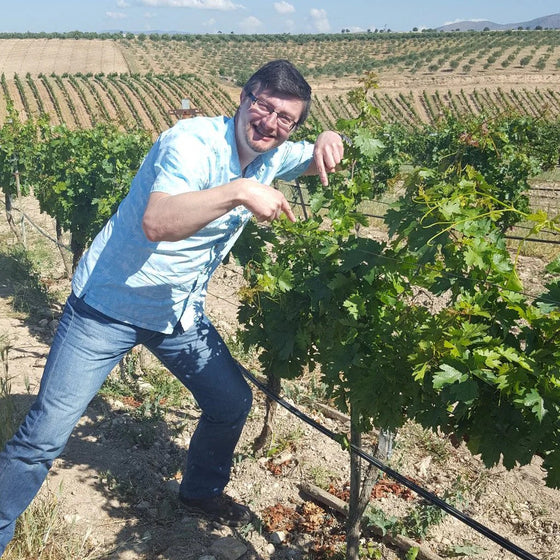
Bouchon date back to the end of the 19th Century when Emile Bouchon left France to work as a winemaker advisor (an early flying wine consultant perhaps?) in the Colchagua Valley. The family moved their winery to the a more southerly Maule Valley in the late 70's with the intention of producing higher quality dry farmed wines, nothing they do could be described as typical bulk Chilean production, and to explain why we are so enthusiastic about them will require a slightly lengthy introduction....
Pais-
Recently discovered to be Listan Prieto from the Canary Islands, and more widely known as Mission in the US, Pais arrived with Spanish Missionaries in the 16th century to provide the grapes for altar wine. The vine is incredibly hardy and disease resistant, and will produce a crop in almost desert conditions, the grapes make a light red wine not dissimilar to Beaujolais but with a touch more acidity. Once planted widely across Chile, Pais' popularity waned with the arrival of French varietals- Merlot, Cabernet, and Carmenere in the late 19th century, which produce much heavier alcoholic wines & incidentally the very vines that bought Emile Bouchon over to consult on. Over the following years large areas of Pais were grubbed up and it was only really found in the cheapest bulk pub blends. The price for grapes was so low that the vines were pretty much left to themselves and harvested for pennies, becoming organic and reaching incredible ages almost by accident. With some of the vines reached an incredible 200 years old, the current team led by Julio Bouchon decided to see what wine could be made, by working directly with the small farmers who had these vines encouraging a very low intervention approach to cultivation and rumoured to be paying paying a sky high value of a whole $2 a kilo, a tenfold increase on the normal payment. The result is Pais Viejo, bursting with bright cherry aromas, strawberries and wildflowers, it's the house red at Arch 13 and Abi describes it as 'light, red fruits, a lunchtime drinker'
There is also the Pais Salvaje, made from a small patch of lighter skinned Pais grapes from vines that have escaped the vineyard and grow freely up into the woods at the edge of the Bouchon Estate. The vines are thought to be over 120 years old, and are fully wild- delicate and prone to disease Pais is not, as these vines have gone feral seeding themselves beyond the fields and hands of man no one is quite sure. Harvesting involves climbing up ladders into the trees' canopy and picking by hand, incredibly labour intensive and time consuming. They are vinified with native yeasts and no filtration in clay amphorae with lots of citrus and quince and an acidic minerality that brooks no argument. Quite possibly the savagest wine we've come across.

The wines don't stop there, Bouchon are also part of VIGNO (Vignadores de Carignan), a body of 16 producers founded after the earthquake in Maule in 2011 which acts like a voluntary AOC- strict rules on viticulture and vinification must be followed before they are allowed to put VIGNO on the label. Only dry-farmed vines over 35 years old can used, Carignan has to be at least 65% of the blend, and the wine must be aged for 2 years before release- all very old world Appellation Contrôlée. Julio's offering spends 12 months in old oak foudres and a further 12 months in bottle before release.
Julio's favourites (and finest offerings) are the tiny releases of his Granito Semillion and Cabernet/Carmenere blend. Both from tiny blocks of dry-farmed vines planted back in the '40's, hand harvested with wild yeast fermentation in concrete eggs and no filtration, the Semillion spends 12 months in old oak barrels giving it ripe lemon & pears flavours, with more fruit and a less petrolly feel than more familiar Sems from Australia and Cab/Carm blend spends 18 months in oak leaving it full of red fruit, pepper, and a touch of graphite aromas.
A full list of their wines we stock can be found here
We have a limited parcel of Château Barde-Haut Saint-Émilion Grand Cru Classé 2016 available.
I wrote to my MP recently.
“Why did you do that, Chris”
“Call it my sense of duty. Let me put you in the picture.”
You really should have been there………………
There are tastings and then there are tastings and last month we served up the most phenomenal Italian Masterclass in the company of Michael Palij, Master of Wine, who steered us through some of his most recent discoveries (notably a Sardinian quartet which provided all the evidence you need of the revolution taking place in the island’s vineyards and cellars).


